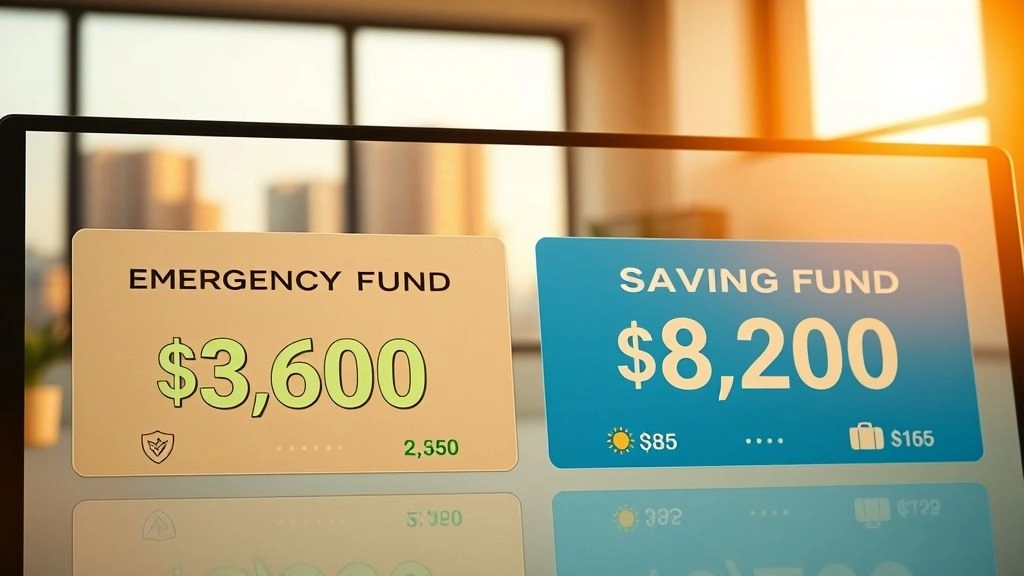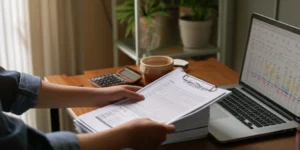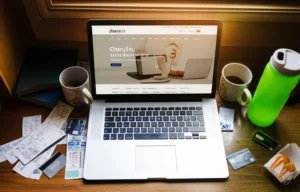Wait, What’s the Real Difference?
Ever bought a big coffee because it was “just $5″…and realized later it actually cost you $50 by the end of the month? It’s wild how tiny habits and good intentions with money can snowball, for better or worse. Most of us have heard we should “save money.” But here’s the deal—dumping all your money into one general savings pile isn’t always the hero move. The magic is knowing how and why to separate your emergency fund and your savings fund. Weirdly easy to mix up, but trust me: getting clear on how an emergency fund is similar to and different from a savings fund? Life-changing for your wallet…and your stress levels.
I know from experience. I used to have just one “savings” account. Felt responsible! Until the day my transmission failed and wiped out both my vacation dreams and my sense of smug adultiness in a single swipe. Let’s break down how keeping two buckets can save your sanity—and your goals.
Why These Funds Get Confused
“It’s All Just Savings…Right?”
Not quite! Both an emergency fund and a “regular” savings fund do have some overlapping features. They’re both about putting away cash, earning a bit of interest, and keeping you prepped for what’s coming—expected and not. Most people start by tossing every extra dollar into savings, thinking one pile is enough. I mean, isn’t “being disciplined about saving” all that matters?
Turns out, the reason these two are similar is sort of sneaky: you’re trying to buy yourself peace of mind. But like… peace of mind for which scenario? Need to fix your car tomorrow? Or want to book a vacation next summer? That’s where the paths split (and mixing them up gets messy).
Quick Table: “Are They Really That Alike?”
| Feature | Emergency Fund | Savings Fund |
|---|---|---|
| Purpose | For unexpected, urgent events (medical, job loss, big repairs) | For planned goals or fun (vacation, house, new laptop) |
| Access | Must be easy to grab in a true emergency | Flexible, but not usually urgent |
| Typical Amount | 3–6 months of basic expenses | As much as you need for your specific goal |
| Account Type | Separate, high-yield or basic savings—never your checking (see why shouldn’t you keep your emergency fund money in your checking account?) | Any savings or investment account—you can get strategic |
So yeah, both are savings. But the “why” and “when” matter more than you might think.
The Story of Temptation
I once watched my friend Laura (the queen of frugality, no exaggeration) use her big fat “savings” fund to splurge on an unexpected girls’ weekend. She planned to replace it…but then her hours got cut at work. When her fridge died out of nowhere, she had to slap the replacement on a credit card—just as interest rates spiked. Brutal.
If she’d separated her funds, maybe she’d still have joined us for cheap tacos, but she would’ve had the confidence to actually sleep at night when things went sideways. True story. And a warning!
When to Reach for Each Fund
Is This an Emergency…Or Just a Want?
Sometimes, it’s clear: your dentist is suddenly talking “oral surgery,” or you get the call that Grandma’s been rushed to the ER and flights aren’t cheap. That’s pure emergency fund territory. You only dip in when life’s blindsided you, not for routine or planned upgrades. If you’re staring at a leaky hot water heater or your only laptop bites the dust the night before a work deadline…hello, emergency savings!
Savings funds, on the other hand, are for when you’re excitedly budgeting for that new iPhone, a cruise, or back-to-school shopping months in advance. You’re aiming for fun or progress, not triage. (What counts as “planned”? If you’ve thought, “I want to do this in the next year or so,” it’s a savings goal.)
Helpful Visual: How They Usually Get Used
- Emergency fund? Used for the worst days you never put on your calendar—when you’d do anything for stability and a little less panic.
- Savings fund? Spent intentionally—after planning, dreaming, maybe even Pinterest-boarding about the thing.
You’d never use your vacation fund to cover a job loss if you could help it, right? That’s why keeping the buckets separate protects both your dreams and your stability.
Where the Money Should Live
Don’t Let Your Future Self Down
Here’s the thing: if your emergency fund is too easy to spend, you’ll find a way to spend it (I’m looking at you, late-night online shopping). That’s why every money pro and YouTube guru says: keep your emergency fund out of your day-to-day checking account. There’s a reason, as highlighted in why shouldn’t you keep your emergency fund money in your checking account?.
Ideally, it sits in a high-yield savings account, super easy to get in a crisis but hard to “accidentally” swipe for pizza. Your savings fund? Sure, that can be in a regular savings account, a CD, or even an investment account if your timeline is longer.
Pro tip: Name your accounts
You can literally label one “Emergency Fund” and another “Trip to Spain” in your banking app. This tiny step gives your brain a nudge to respect your hard work. Trust me, it helps.
How Much Should You Even Save?
Ready for the most wishy-washy answer ever? “It depends.” But here’s what most experts say: aim for 3–6 months of living expenses in your emergency fund. If that sounds nuts, you’re not alone. When I started, my first “goal” was $500. That tiny pot of cash came in clutch when my car battery croaked in February (…I almost kissed the tow truck driver, I was so relieved).
The truth? Even a $1,000 cushion is huge. I challenge you: check out the emergency fund examples from real people. You’ll see how even small habits grant real freedom—especially if your budget feels snug.
For your regular savings fund, decide based on your goal. It could be $200 for holiday gifts, or $5,000 for your best friend’s wedding next year. That’s the fun part—you get to dream and plan.
Bigger Life, Bigger Fund?
For families, freelancers, or folks facing lots of unpredictability, consider how a $30,000 emergency fund might not be as outlandish as it sounds. Peek at this wild story: $30,000 emergency fund. It’s a confidence booster to see all the ways people get there, bit by bit.
Use a Calculator—Seriously
If the math makes your head spin, let a tool do the work. Use the emergency fund calculator—you’ll plug in your bills, your goals, and poof: your magic number appears. Even if it feels overwhelming at first, just seeing the target is empowering.
How to Build Both Funds—Without Winning the Lottery
Small Steps > Big Jumps
It’s the daily stuff that matters. I started by tucking away just $10 each pay period into a new online savings account. I never felt the pinch. My friend Brian did a closet cleanout and sold old gear—his “junk” turned into month two of his emergency fund goal, and he laughed about how “it kinda felt like cheating.” Every little bit chips away at your target.
Want more inspiration? Skim emergency fund examples for ideas. See how real people hustle, automate, and get creative (one person saved her entire side-gig tips; another cut cable for three months and put that “lost” cash to work).
Keep Your Hands Off—Most of the Time
This is the heart of the lesson: emergencies and planned goals are not the same. Don’t swap money between the buckets unless you absolutely must. If you want extra accountability, tell a friend or set a “don’t touch” note as your account’s nickname. Even better? Pick an account that’s easy to access in an emergency—but not so easy you’ll impulsively book a last-minute flight “because it’s cheap.”
Avoid the Tempting Trap
Why not just keep all your money in checking and “promise” you won’t spend it? Well… because you’re human. It’s fair to admit you’ll be tempted. See the warning signs, and check out the very convincing argument in why shouldn’t you keep your emergency fund money in your checking account?. Seriously. Because “accidental” savings raids are way too common…and they sting.
Parting Thoughts: Build Your Peace of Mind
If you’ve ever wondered “how is an emergency fund similar to and different from a savings fund?”, I get it. They overlap in spirit—the drive to be prepared, less stressed, and more in control. The difference is what sets you up for quiet confidence (instead of waking up in a cold sweat over a busted pipe or missed opportunity). Start small if you must. Hide the emergency piece where future-you can find it on a hard day and separate it from the everyday dreams. Use the emergency fund calculator to chart your progress or browse more emergency fund examples for real-world inspo.
Here’s the nudge: set up your separate account today, even if you just toss in five bucks. (Go ahead, rename the account—it’s kind of fun.) If you’ve got questions, drop them below. I’ll cheer you on, or we’ll troubleshoot together. The best part? You’re not just saving money. You’re building a future with a little less worry—and a lot more “I got this.”













